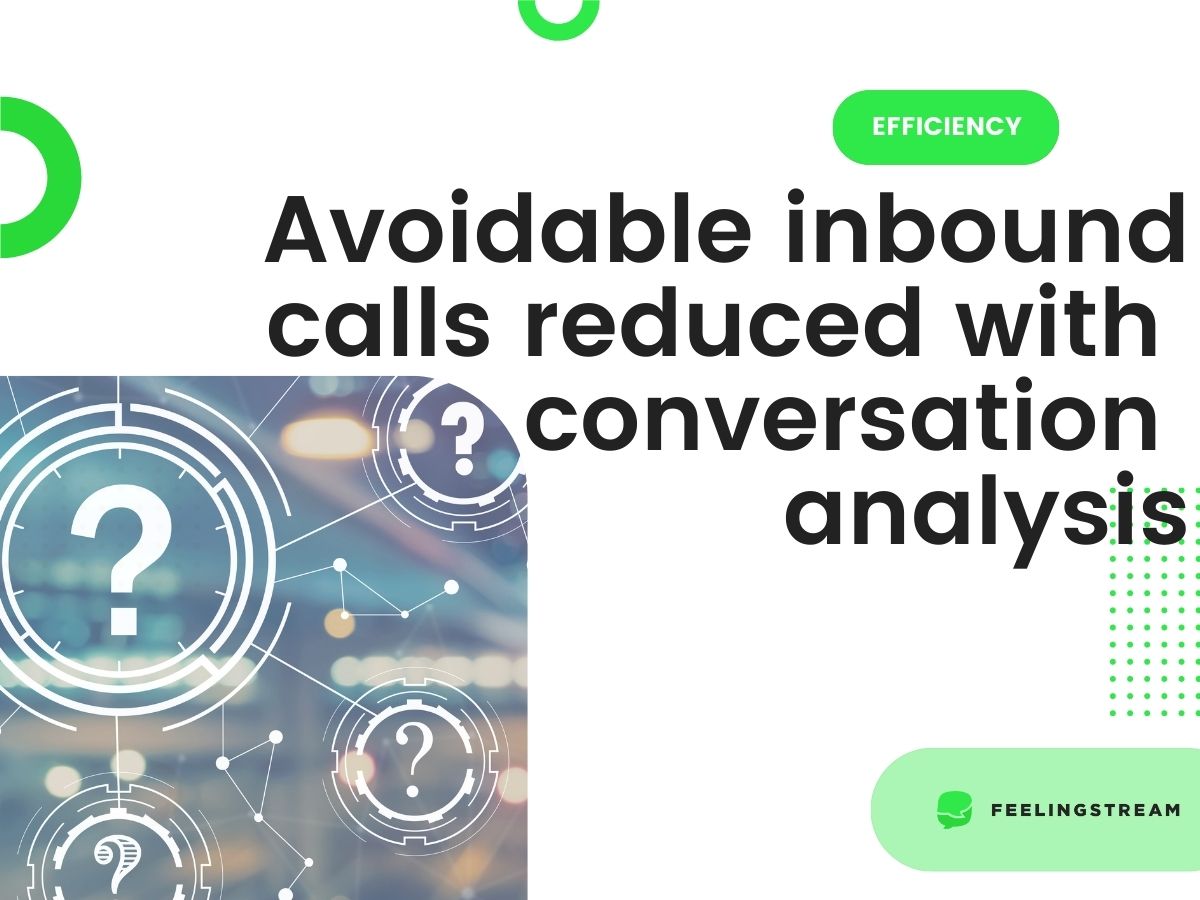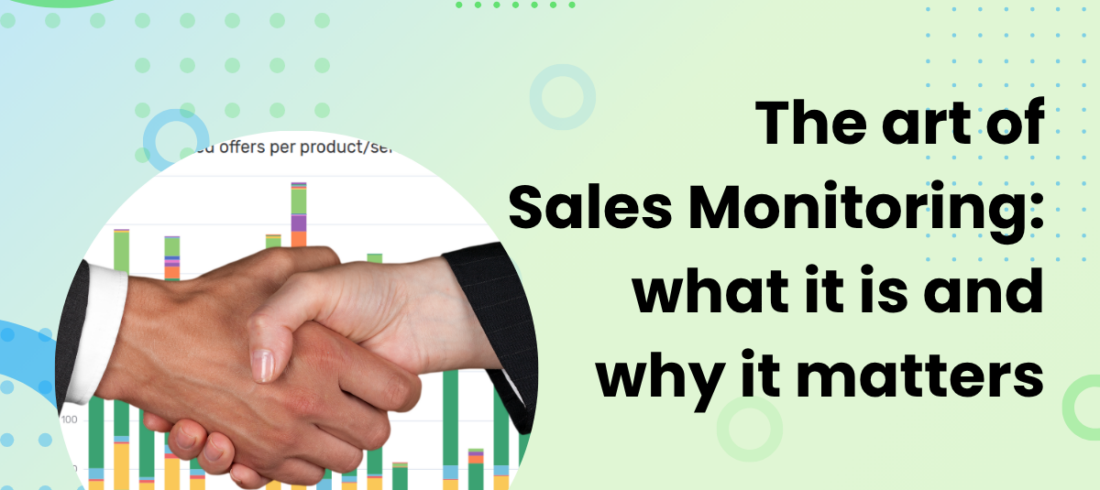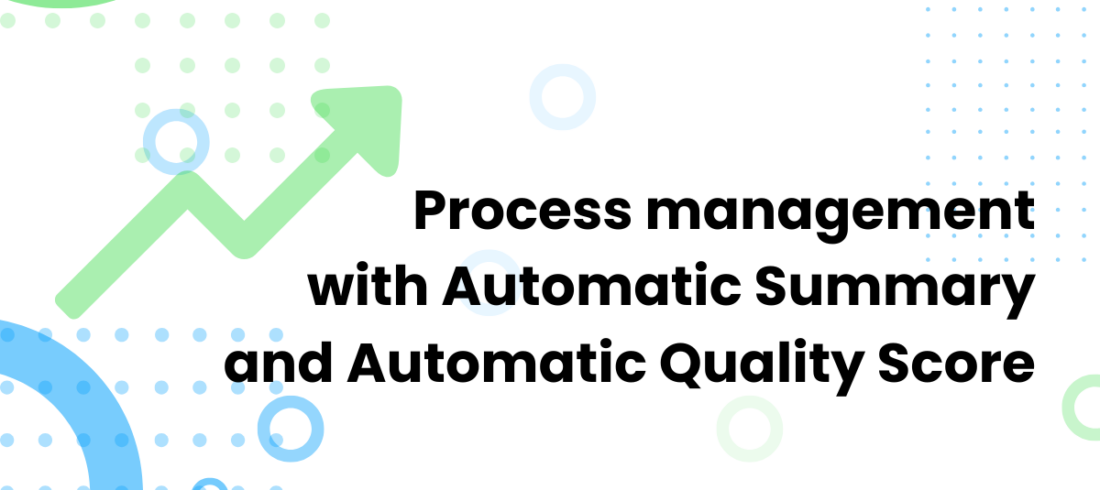For each company, there is always some percentage of avoidable inbound calls that create cost. Companies could dodge them with the right actions. Call quality managers train their customer service agents to do the best job that they can do. Product owners also need to find how they could improve their products and services based on knowledge from customer contacts.
Recurring topics in calls show patterns. Stakeholders can analyze them in order to improve processes, services, self-service etc. It is very time-consuming to manually go through all incoming calls to find those avoidable inbound calls that warrant a change.
In this post, we share how we use AI to help you find and handle avoidable inbound calls. This will be important for better services, customer service, and employee satisfaction.
Analyzing avoidable inbound calls means work but it is worth it
Each call to customer service means cost for the company. Therefore, each avoidable contact means money and time that the company could avoid spending. Generally speaking – when a company finds that 10-25% of their contacts are actually avoidable inbound calls, then it’s time to make changes.
Typically there will be multiple different types of issues and calls that are behind those percentages. Those small issues definitely add up.
Here are a few examples of avoidable calls that can make up a large percentage of all incoming calls:
- Logistics companies receive a lot of calls from customers who want to track their parcels. Parcel tracking is generally available as self-service on their website. The parcel’s location is something that the customer could find out themselves. Regardless, customers choose to call. Learning from those calls is important because people will not start calling less simply because we want them to. Most likely changes need to be made to the tracking system to make it more user-friendly. Maybe customers need an automated message with relevant information before they reach out to an agent on the customer service line. Such decisions can be based on an in-depth analysis of such calls and implemented by product owners.
- Telecom companies receive a large percentage of calls from customers asking about charges on their monthly bills. When those calls are analyzed and it turns out that the customers keep asking about the exact same things on those bills, the analysis will show what needs to change. The service descriptions, self-service, and bills may all need modification for them to be clear for customers. This inevitably means that a lot of different people and departments need to be involved for this change to happen. Still, a small change like that can have a huge impact on the number of incoming calls.
Where are the issues hiding?
Currently, most companies only know what their customers have called about based on their customer service agents’ notes. Customer service agents have to select a predefined category for the call. However, in most cases, these categories are not exact enough for proper analysis.
What’s more, agents are also not able to help decrease avoidable calls. The issues are often hiding in the processes, self-service not being user-friendly, website not being informative enough etc.
The only efficient way to make an impact is to analyze the avoidable calls in-depth. Of course, doing such analysis manually is a lot to ask.
Automated analysis of calls that goes in-depth and really makes a difference
Feelingstream’s call analytics platform transcribes all calls to text. The topics of those calls are automatically detected in more detail than is common in companies these days where it’s done manually by agents.
The software looks for patterns in calls and groups them together based on topics. This gives the client a topic map. Quality managers, product owners and service owners have to all come together to really see what the customers call about. Next step is to map out, which of those are avoidable inbound contacts.
Frequently occurring topics (such as bills) can lead to different smaller topics (questions about specific charges, offers, services etc.). Taking the time for analysis and really going in-depth with the (sub)topics will show what the customers need.
What’s the possible impact of analyzing avoidable inbound calls?
Let’s say you find that the topic map shows that 20% of all incoming calls are about billing. Analysis shows that more than 50% of those calls are avoidable contacts. That is 10% of your calls that you could work on eliminating by analyzing your customers’ struggles. Making needed changes can result in a large drop in calls.
As said before, each group of calls with issues that you realize could be solved through seemingly small changes may be just a small percentage of your total. However, these small percentages do add up.
To make a big change, you have to start from somewhere and with Feelingstream you will have the knowledge to get moving towards your goals.
If you manage to avoid 10-25% of avoidable calls, it will not only mean less cost, other areas will also benefit:
- Customer service agents will be less busy with trivial questions.
- Customer service satisfaction rates can go up 5-15% as the wait times can go down 20-50%.
- When managers improve processes and self-service based on customer needs, they will be more user-friendly, leading to less calls from frustrated customers.
- The calls and processes will be more straight-forward, meaning that employee satisfaction rates go up.
- Agents will also have the opportunity to work more on their sales skills, focus more on relationships with customers, work on retention etc.
This type of work has to be continuous. As time goes on and as you make changes, new issues may also arise. It may be difficult to find a solution for certain issues, you may have to test a few different solutions.
Work needs to be constant as the situation changes
The market and your competition could change, your customer base may change and you will need to keep up. This all means constant work and analysis. But as you keep using Feelingstream’s automated solution, you will learn where to make your business run more efficiently and keep your customers happy as time goes by.
If you would like to know more about Feelingstream’s automated call analytics platform and really make a change for your company, contact us to request a live demo.




